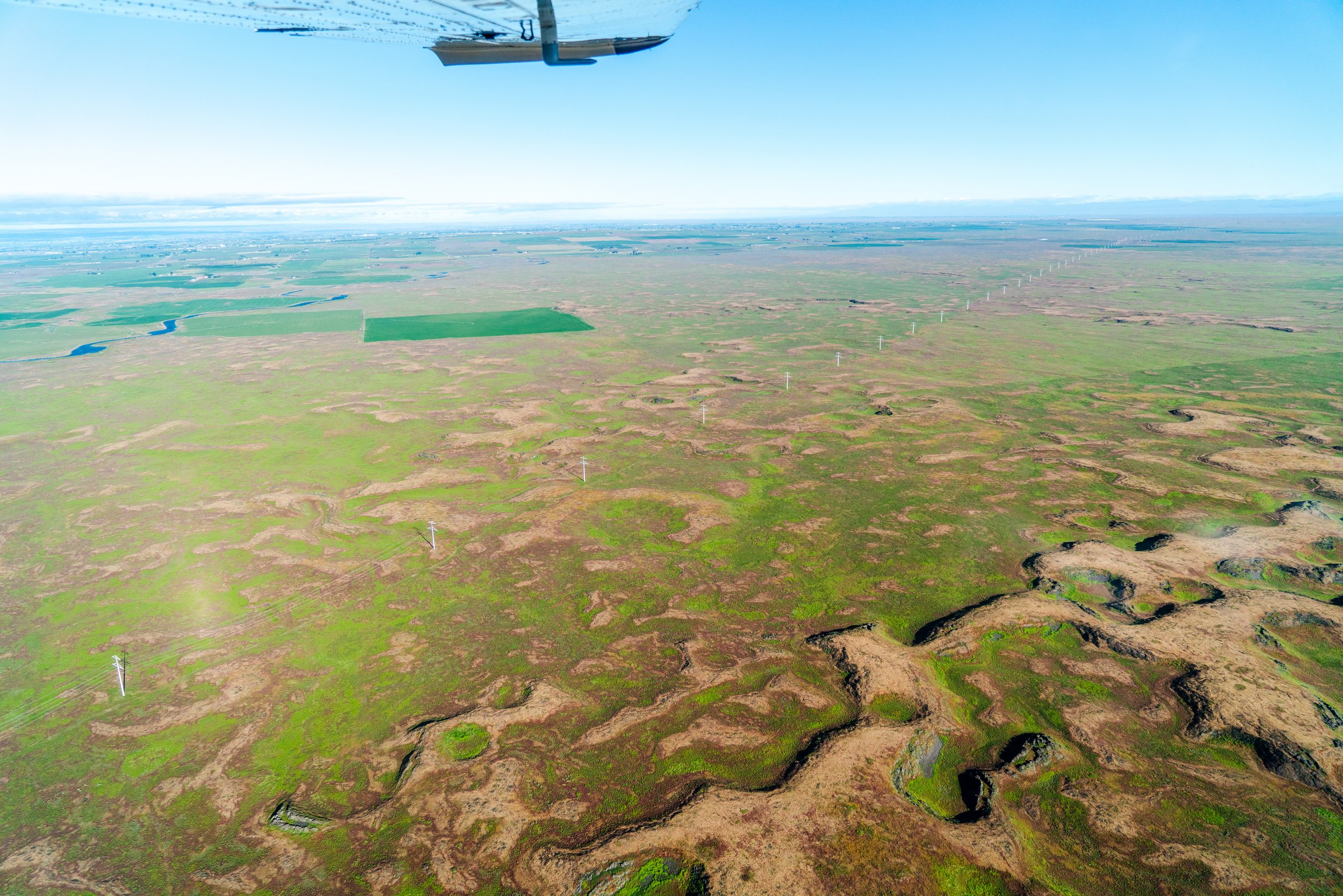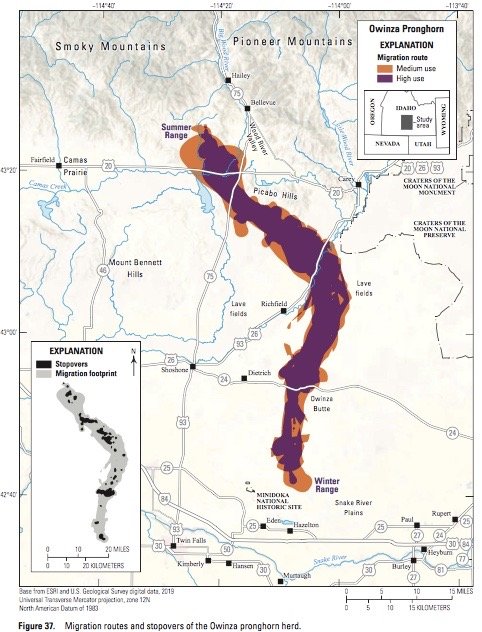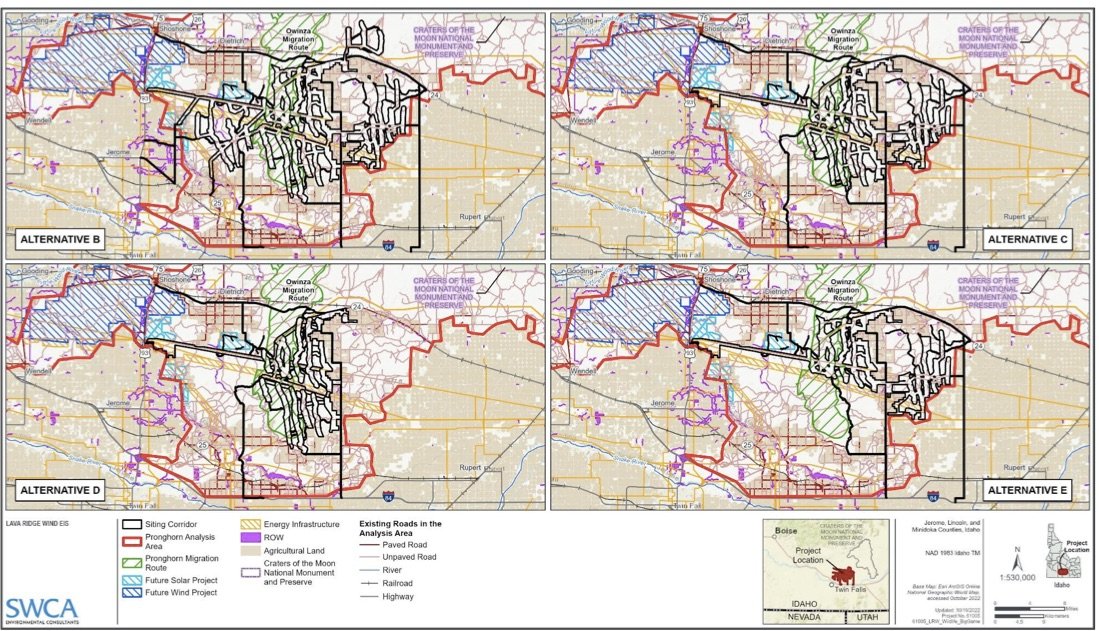IWF On Proposed Lava Ridge Wind Project
The Bureau of Land Management is halfway through gathering public comment on the draft environmental impact statement (DEIS) for the Lava Ridge Wind Project. If approved, Lava Ridge would be a commercial-scale wind energy project of up to 400 turbines across over 84,000 acres of public land just 25 miles northeast of Twin Falls.
The controversial Lava Ridge project has become part of the daily conversation at the IWF office and has garnered the attention of many Idahoans- from locals in the Magic Valley, to Governor Little, to the halls of the Idaho statehouse.
IWF was appointed as a member of the BLM’s Resource Advisory Council’s Lava Ridge Subcommittee. Over the last year, the subcommittee listened to countless presentations and testimony from the public. We’ve toured the proposed site, listened to archaeologists speak in front of Wilson Cave, stood atop Sid Butte, and heard impactful stories from the Japanese American community at the Minidoka National Historic Site nearby about viewshed concerns. We’ve even been able to fly over the project area thanks to our friends at Ecoflight.
Our flight over the proposed Lava Ridge site. Credit: Ecoflight
Listening is one component of this process. The other component is analyzing the draft environmental impact statement and range of action alternatives. The National Environmental Policy Act requires the BLM to consider a reasonable range of alternatives and a discussion of the environmental effects of each alternative, and their significance. It also requires the BLM to respond to concerns from the public.
Here’s the short of it: IWF has concerns with each of the action alternatives at this time.
None of the action alternatives avoid placing turbines in the path of the Owinza pronghorn migration and their winter range. Some of the action alternatives would place development in some of the last remaining intact sagebrush that is utilized by sage-grouse, pronghorn, mule deer, and elk. We are also concerned about the significant increase in road construction (upwards of 486 miles of new roads) and temporary fence construction (upwards of 395 miles of temporary fence) to all wildlife species. Finally, we have concerns about the scarcity of our water supply in southern Idaho and how the construction phase of the project may further impact this finite resource.
Migration routes and stopovers of the Owinza pronghorn herd. Credit: USGS Ungulate Migrations of the Western United States, Vol. 2.
We’ve recommended that the BLM develop alternatives that avoid these impacts to our valued wildlife species and minimize impacts to the hunting opportunities in the area.
Until then, we are not comfortable supporting any action alternative.
Lava Ridge DEIS Action Alternatives would place wind turbines and associated infrastructure in the pathway of the Owinza pronghorn migration, outlined in green.
We’ll end it with this: Energy development is coming to Idaho as the demand for energy grows. IWF may support projects if sited in appropriate locations with the least environmental impact and supported by the community.
Unfortunately, there is little that is currently in place that requires projects to avoid development in big game migration routes, winter range, and stopover areas. Even if the BLM chooses to Select Alternative A, or “No Action,” for Lava Ridge, there are very few mechanisms in place today that prevent the next proposal to come in behind it on the same landscape. There are many unique challenges and issues to Lava Ridge, but these issues are likely to spill over into other proposed renewable energy projects in our state. The Twin Falls District BLM office alone has upwards of a dozen other solar, wind, and battery storage project applications that are in line behind Lava Ridge’s EIS.
That’s why IWF has been pushing for the development of a statewide programmatic wind energy environmental impact statement to gather information on where development is suitable or not suitable based on a number of values on public lands. This programmatic process could develop exclusion criteria that would ensure that wind energy projects are sited in a responsible manner and avoid impacts to our valued wildlife.
Comments on the Lava Ridge DEIS are being accepted until April 20th. As we approach the comment deadline, we will share our technical comments here.
Featured photo: Credit Ecoflight.



